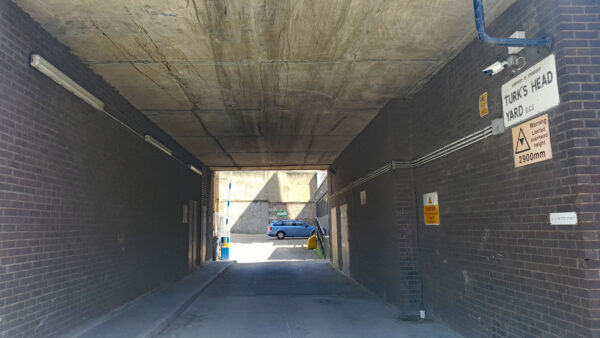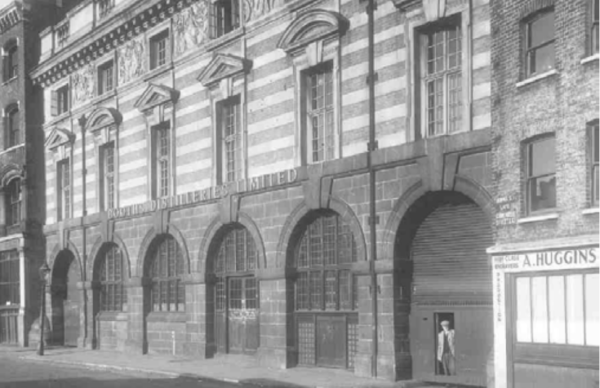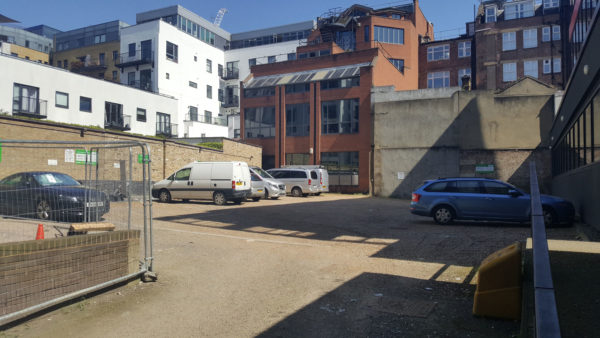This rather shabby looking car park of an alley is a lingering remnant of a time when the area was filled with old warehouses and factories.
Before the arrival of the railways, the area was a densely built-up area with lots of alleys and courtyards leading off Turnmill Street. The western side was wiped out by the canyon dug for Farringdon Station, while the long line of small warehouses and alleys were slowly merged into a series of larger buildings.
The alley probably moved around a bit over its lifetime as buildings were torn down and rebuilt, as it today sits across an old parish boundary, and that’s quite unusual as old alleys often marked boundaries, not sat across them.
The parish boundary, now in the middle of the yard was however likely to have followed a since lost river, the Little Torrent that ran down to the Fleet river at this point. The presence of that river and the Fleet, in general, attracted a lot of leather workers and other “dirty” trades to the area, which gave it the character it has retained of old warehouse buildings and factories — now offices and expensive flats.
This particular alley shows up, probably as Coach Yard on older maps, but was renamed as Turk’s Head Yard by 1799, when it is clearly marked on the Horwood map of that year. It’s likely that the renaming comes from a pub of the same name, and the area was notorious in Georgian times for the number of pubs, and the associated violence in them.
By Victorian times, there were just two alleys remaining, of which one is Turk’s Head Yard. The northern side of the alley was by now dominated by one large building – a printing works owned by Grant and Co., while the south side was still lined with smaller warehouses and offices, plus a bit further down, a large gin distillery, owned by Booths.
The area was badly damaged during WW2, Turk’s Head Yard saw the printing works to the north side of the alley totally destroyed. The land was used as a car park in the post-war years, and only filled in with the modern offices in the 1970s and another burst of development in the 1980s.
The courtyard has survived all this, as a rather neglected back space still used for deliveries and as a run-down car park. There had been a plan to fill the courtyard with a block of flats, but that was rejected in 2013, but in 2017 they were back with plans for offices instead.
In a year or so, this alley will have undergone the latest change in its long varied history.










Thank you for your description of the area. My paternal 3x great grandfather lived at No 1 Turk’s Head Yard in the 1861 census with my 3x great grandmother and their children including my 2x great grandfather Mark Gardiner/Gardner.